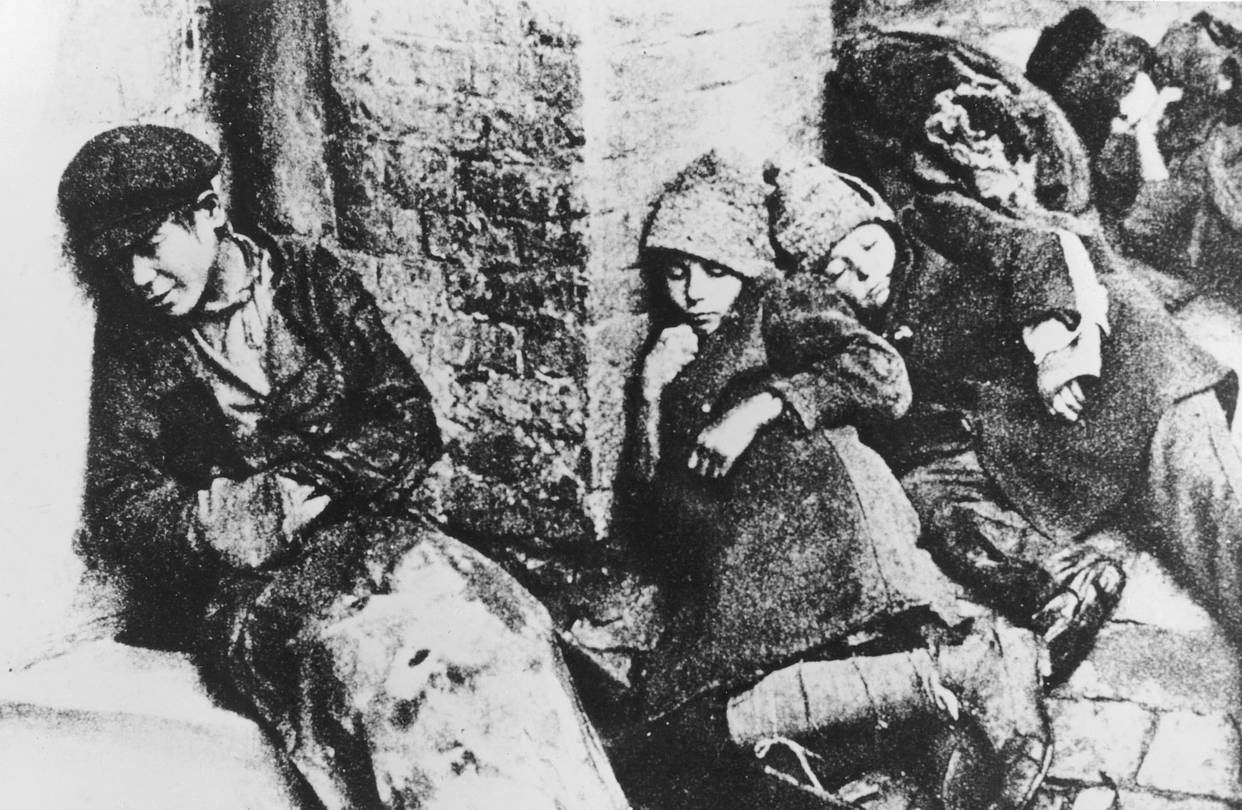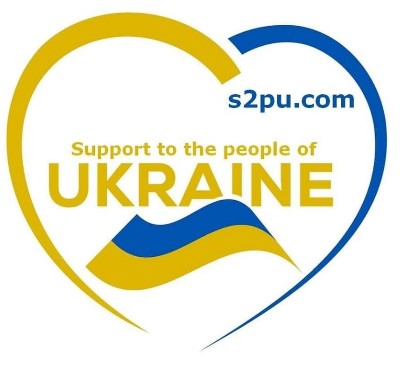
Hunger catastrophe in Ukraine
The collectivization policy was mainly implemented in the period 1928-1933. It aimed to consolidate agriculture into large state-owned joint ventures to free up labor for industry. The plans were specifically aimed at Ukraine, the Soviet Union's most important agricultural area, to which small farmers stubbornly refused to submit. Stalin wanted to export grain in order to import industrial goods, which were important for his five-year plans.
In 1928, the authorities began requisitioning grain, with the result that the farmers produced less: they slaughtered livestock and set fields on fire in protest of the forced collectivization. In 1932-33, Stalin drastically increased the grain quota that small farmers were obliged to give to the state, at the same time as there had been a poor crop in 1931 due to drought. The result was a massive famine, called the "holodomor" (starvation death), which was mention in the Soviet Union, but also in the West, with a few exceptions.
In 2007, the independent Ukraine marked the famine with a major exhibition, «Ukraine Remembers! Holodomor 1932-1933 - Genocide of the Ukrainian nation ».
Most historians and demographers agree that the famine in Ukraine in 1932-33 was created by Stalin's policies and not by "natural" causes such as drought, but researchers still have difficulty agreeing on a method to calculate the extent of this demographic. the disaster. The figures vary between a population loss, including deaths and births due to hunger and disease, of 5 and 11 million.
Figures and tables from the ZAGS offices show an excess mortality rate in 1933 of over 1.3 million in the Soviet Union, mainly in Ukraine. But these sources are very incomplete this year of famine. Even in good times, staff had trouble maintaining accurate records. In the countryside, there were many who wanted to have as little as possible to do with government officials. Many deaths were not recorded, often because there was a fear that land would be transferred to other farmers. In the chaos that followed the collectivization, the persecution of the kulaks (independent farmers who used hired labor) and the famine, many of the ZAGS offices completely gave up keeping records (Merridale 1996).
In addition to an under-registration of over 1 million deaths, in 1933 3 million more deaths were registered in the Soviet Union than the average for the years 1937-1931. There was also a sharp decline in the number of births in 1933 and 1934. Many researchers have ended up estimating a direct population loss in Ukraine of 2.5-3 million as a result of the famine, in addition to an equally large indirect loss in the form of lower birth rates (Wheatcroft 1990). Estimates of 11 million deaths have also been published, but this was mainly before the Soviet archives became available to researchers.
Does the 1937 census reveal a genocide?
It has been discussed whether the famine in Ukraine can be called a genocide, and to what extent the data from the 1937 census substantiate this. The argument is that Stalin deliberately went to great lengths to get rid of the troublesome resistance among the nationalist peasants in Ukraine.
The authorities of Ukraine and 26 other countries have recognized the famine in 1933 as a genocide, and the Ukrainian authorities have tried to pass a law making it illegal to deny that holodomor was a genocide (newspaper Correspondent December 1, 2007).
The archival material from the 1937 census shows that there was a population decline of 10 percent or more between 1926 and 1937 in five of the eight regions of Ukraine for which data are available (Johnson 1992). The registered mortality rate in Ukraine in 1933 was in several places more than three times as high as in previous years. No other region in the Soviet Union had the same mortality rate, with the exception of one region in the Lower Volga region. At the same time, the figures show that there were many other areas in the Soviet Union that had very high mortality this year, and that the famine was far-reaching and affected not only Ukrainians (Wheatcroft 1990). The 1937 census also shows that there were areas (Saratov district, Kazakhstan, Volga German ASSR) where the population decline between 1926 and 1937 had been greater than in Ukraine (Johnson 1992).
Nevertheless, most historians today agree that the famine was largely politically motivated, and that the policy of collectivization was very brutal in Ukraine. The 1937 census and accompanying archival material that have been released substantiate that a demographic catastrophe took place in Ukraine, but do not say much about Stalin's intentions, whether he deliberately wanted to exterminate the Ukrainian people, or whether the famine was "only" due to poor economic policy.
|
Parliament of EU recognises Ukrainian famine of 1930s as crime against humanity In a resolution on the commemoration of the Holodomor, the artificial famine in Ukraine in 1932-1933, MEPs describe it as "an appalling crime against the Ukrainian people, and against humanity". According to the resolution, the Holodomor famine of 1932-1933, which caused the deaths of millions of Ukrainians, "was cynically and cruelly planned by Stalin's regime in order to force through the Soviet Union's policy of collectivisation of agriculture against the will of the rural population in Ukraine".
MEPs believe that "recalling crimes against humanity in European history should help to prevent similar crimes in the future" and they stress that "European integration has been based on a readiness to come to terms with the 20th century's tragic history and that this reconciliation with a difficult history does not denote any sense of collective guilt, but forms a stable basis for the construction of a common European future founded on common values".
The resolution therefore makes a "declaration to the people of Ukraine and in particular to the remaining survivors of the Holodomor and the families and relatives of the victims".
It "recognises the Holodomor (the artificial famine of 1932-1933 in Ukraine) as an appalling crime against the Ukrainian people, and against humanity".
The text then "strongly condemns these acts, directed against the Ukrainian peasantry, and marked by mass annihilation and violations of human rights and freedoms".
It also "expresses its sympathy with the Ukrainian people, which suffered this tragedy, and pays its respects to those who died as a consequence of the artificial famine of 1932-1933".
Lastly, the resolution "calls on the countries which emerged following the break-up of the Soviet Union to open up their archives on the Holodomor in Ukraine of 1932-1933 to comprehensive scrutiny so that all the causes and consequences can be revealed and fully investigated".
|
||
Source:
2) https://www.europarl.europa.eu/sides/getDoc.do?language=en&type=IM-PRESS&reference=20081022IPR40408

Comments powered by CComment